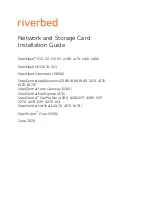
www.ti.com
2.12 VTP IO Buffer Calibration
2.13 Auto-Initialization Sequence
Peripheral Architecture
The DDR2 memory controller is able to control the impedance of the output IO. This feature allows the
DDR2 memory controller to tune the output impedance of the IO to match that of the PCB board. Control
of the output impedance of the IO is an important feature because impedance matching reduces
reflections, creating a cleaner board design. Calibrating the output impedance of the IO will also reduce
the power consumption of the DDR2 memory controller. The calibration is performed with respect to
voltage, temperature, and process (VTP). The VTP information obtained from the calibration is used to
control the output impedance of the IO.
The impedance of the output IO is selected by the value of resistors connected to the DDR_ZN and
DDR_ZP pins. The resistor should be chosen to be 4 times the desired impedance of the output IO. The
DDR2 reference design requires the resistor values to be 200 ohms. This means that both the DDR_ZN
and DDR_ZP pins must have a 200 ohm resistor connected to them.
Figure 3
describes proper
connection of the DDR_ZN and DDR_ZP pins.
To set the output impedance of the IO, calibration must be initiated by writing to the following
memory-mapped registers:
•
VTP IO Control Register (VTPIOCR)
•
DDR VTP Register (DDRVTPR)
•
DDR VTP Enable Register (DDRVTPER)
The VTP IO control register is written to begin the calibration. Once the calibration is complete, the VTP
information is stored in the DDR VTP register. The DDR VTP register should then be read, retrieving the
VTP information, and the VTP information written to the VTP IO control register. The DDR VTP enable
register is written to enable/disable access to the DDR VTP register. Steps 8-15 of the initialization
procedure described in
Section 2.13.2
shows the procedure that must be followed to perform VTP IO
calibration.
Note:
VTP IO calibration must be performed following device power up and device reset. If the
DDR2 memory controller is reset via the Power and Sleep Controller (PSC) and the VTP
input clock is disabled, accesses to the DDR2 memory controller will not complete. To
re-enable accesses to the DDR2 memory controller, enable the VTP input clock and then
perform the VTP calibration sequence again.
The DDR2 SDRAM contains mode and extended mode registers that configure the DDR2 memory for
operation. These registers control burst type, burst length, CAS latency, DLL enable/disable (on the DDR2
device), single-ended strobe, etc. The DDR2 memory controller programs the mode and extended mode
registers of the DDR2 memory by issuing MRS and EMRS commands during the initialization sequence.
The initialization sequence performed by the DDR2 memory controller is compliant with the JESDEC79-2A
specification. The DDR2 memory controller performs an initialization sequence under the following
conditions:
•
Following reset (rising edge of VRST or VCTL_RST)
•
Following a write to the DDRDRIVE bit field or the two least-significant bytes in the SDRAM bank
configuration register (SDBCR)
During the initialization sequence, the DDR2 memory controller issues MRS and EMRS commands that
configure the DDR2 SDRAM mode register and extended mode register 1 with the values described in
Table 14
and
Table 15
. The DDR2 SDRAM extended mode registers 2 and 3 are configured with a value
of 0h. At the end of the initialization sequence, the DDR2 memory controller performs an autorefresh
cycle, leaving the DDR2 memory controller in an idle state with all banks deactivated.
When a reset occurs, the DDR2 memory controller immediately begins the initialization sequence. Under
this condition, commands and data stored in the DDR2 memory controller FIFOs will be lost. However,
when the initialization sequence is initiated by a write to the two least-significant bytes in SDBCR, data
and commands stored in the DDR2 memory controller FIFOs will not be lost and the DDR2 memory
controller will ensure read and write commands are completed before starting the initialization sequence.
SPRU986B – November 2007
DDR2 Memory Controller
31
Submit Documentation Feedback
















































